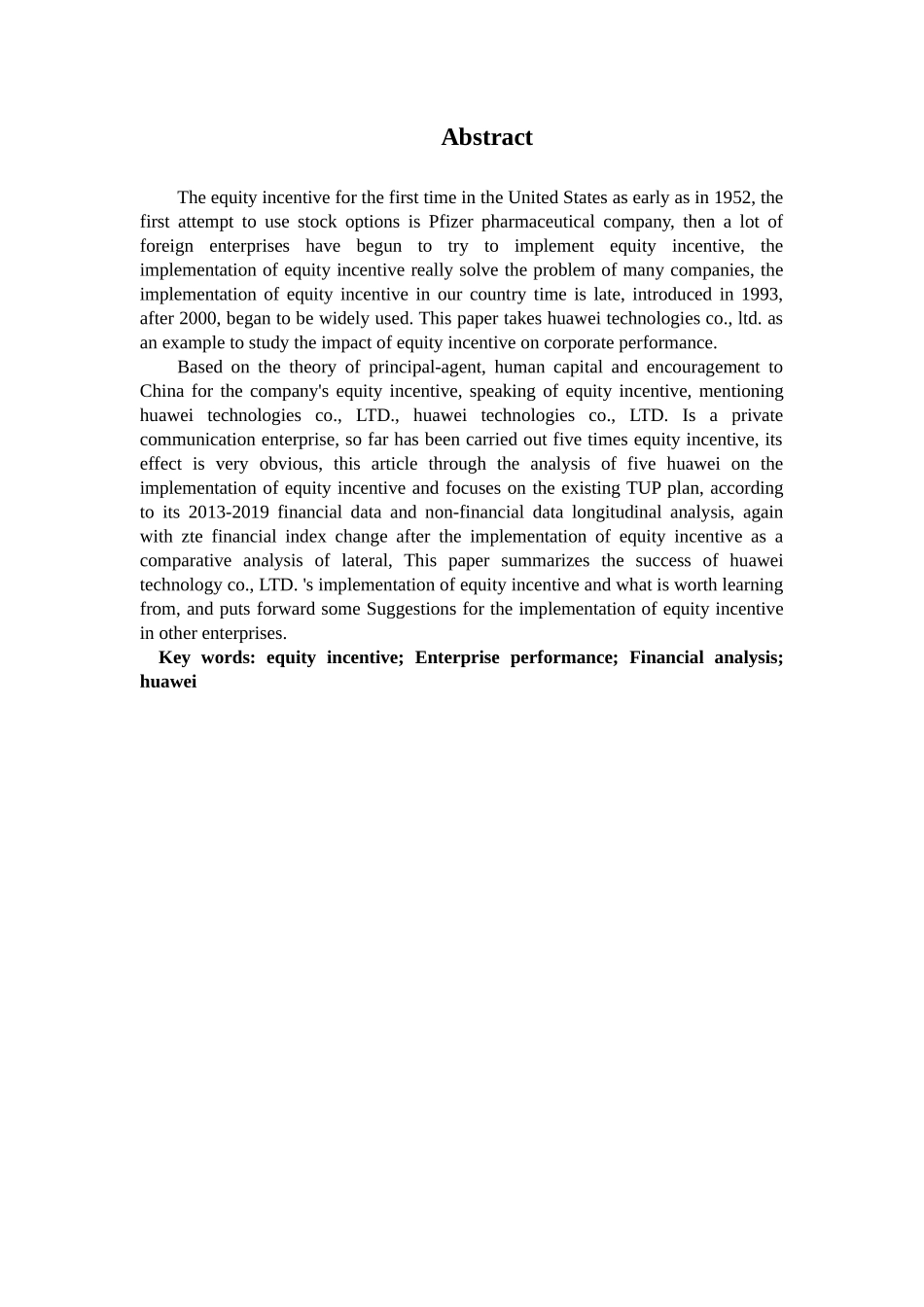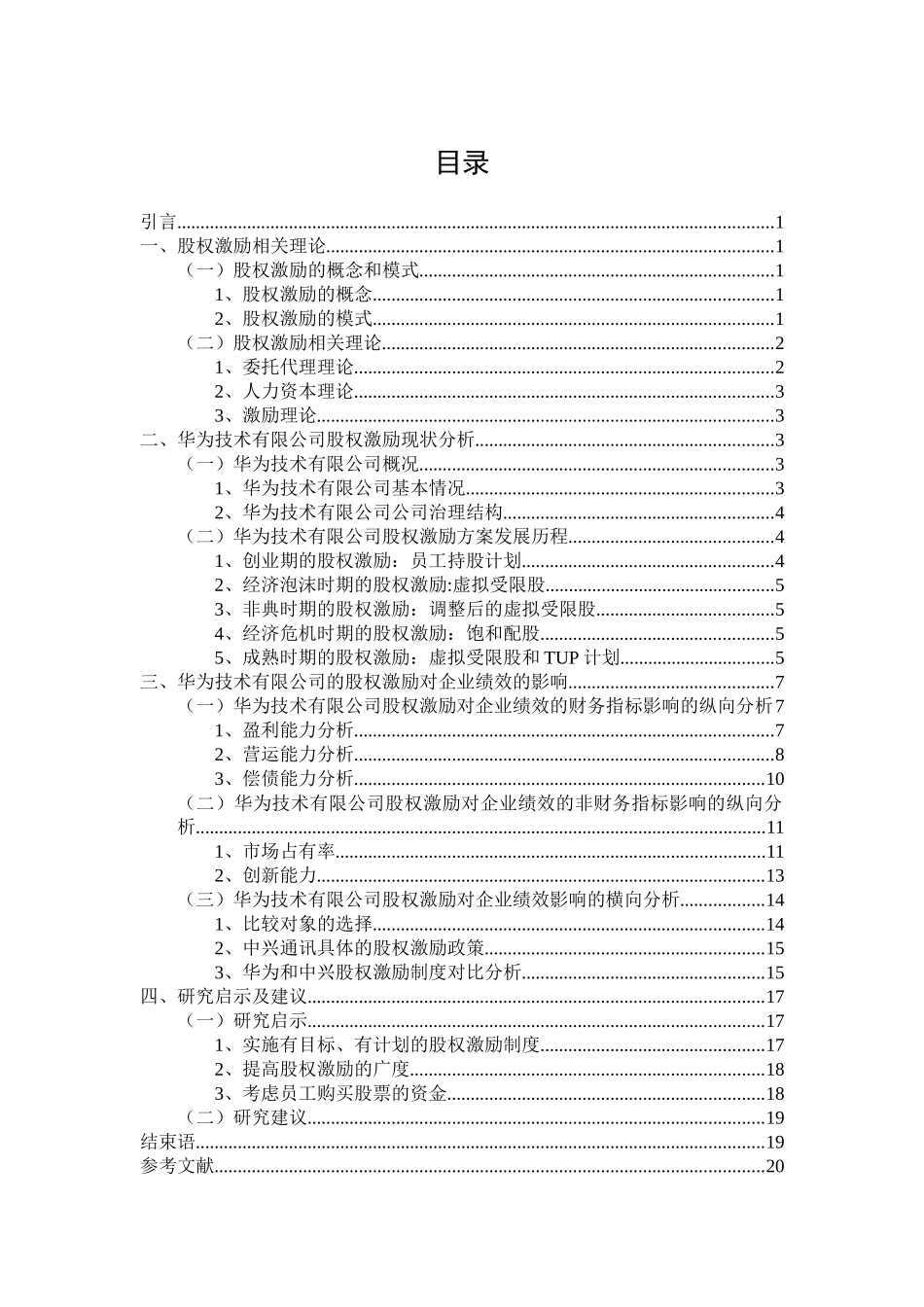摘要股权激励的首次出现早在 1952 年的美国,第一个尝试运用股票期权的公司是辉瑞制药公司,随后国外的好多企业都开始尝试推行股权激励,股权激励的实施确实解决了不少企业的问题,我国实施股权激励的时间比较晚,1993 年开始推行,在 2000 年后也开始被广泛应用。本文以华为技术有限公司为例,研究其实施股权激励对公司绩效的影响。本文基于委托代理、人力资本和激励理论对华为公司的股权激励进行研究,说起股权激励,不得不提华为技术有限公司,华为技术有限公司作为一家非上市的通讯企业,到目前为止先后实施了五次股权激励,其实施效果很明显,本文通过分析华为公司实施的五次股权激励,重点研究现行的 TUP 计划,根据其2013-2019 年的财务数据以及非财务数据进行纵向分析,再以中兴通讯实施股权激励后的财务指标变化作为对比进行横向分析,总结出华为技术有限公司实施股权激励的成功之处以及值得借鉴之处,并提出建议,为其他企业股权激励的实施提供一定的参考。关键词:股权激励;企业绩效;财务分析;华为AbstractThe equity incentive for the first time in the United States as early as in 1952, the first attempt to use stock options is Pfizer pharmaceutical company, then a lot of foreign enterprises have begun to try to implement equity incentive, the implementation of equity incentive really solve the problem of many companies, the implementation of equity incentive in our country time is late, introduced in 1993, after 2000, began to be widely used. This paper takes huawei technologies co., ltd. as an example to study the impact of equity incentive on corporate performance.Based on the theory of principal-agent, human capital and encouragement to China for the company's equity incentive, speaking of equity incentive, mentioning huawei technologies co., LTD., huawei technologies co., LTD. Is a private communication enterprise, so far has been carried out five times equity incentive, its effect is very obvious, this article through the analysis of five huawei on the implement...


